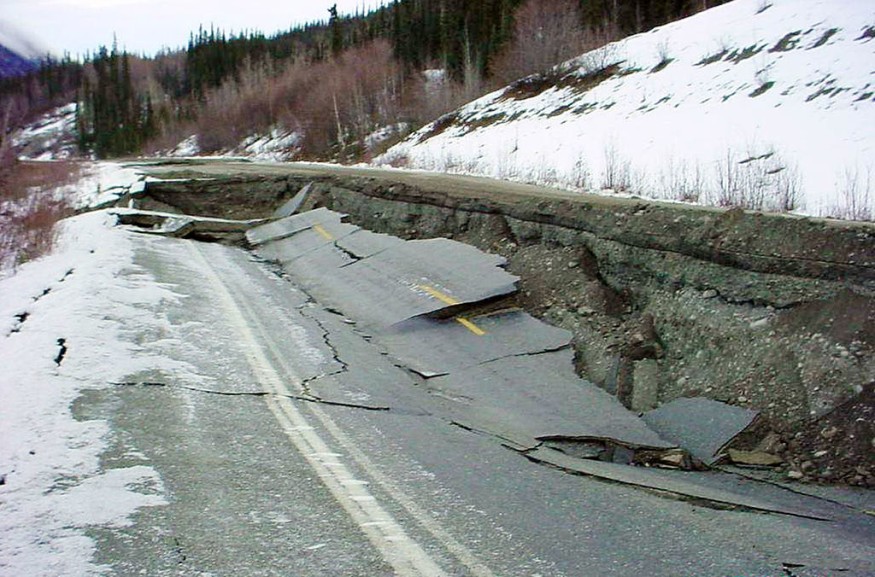Alaska Earthquake: Magnitude 7.2 Tremor Triggers Short Tsunami Warning

Officials have confirmed the cancellation of a tsunami advisory that was issued in response to a magnitude 7.2 Alaska earthquake striking off the state's coast Saturday, according to CNN.
The earthquake originated approximately 55 miles southwest of Sand Point, Alaska, at a depth of 13 miles, occurring at around 10:48 p.m. local time (2:48 a.m. ET), as reported by the US Tsunami Warning Center.
Initially, a tsunami warning was issued for parts of Alaska near the Aleutian Islands, from Unimak Pass to Kennedy Entrance.
However, it was later revised to a tsunami advisory. In the aftermath of the earthquake, a small tsunami with an elevation of up to 0.5 feet was observed in Sand Point and King Cove, Alaska.
Fortunately, there is no tsunami threat for other Pacific coasts in the United States and Canada, according to the advisory.
Coincidentally, the Alaska Volcano Observatory issued a threat notice for the Shishaldin volcano on the same day, as it emitted a plume of ash.
The observatory's social media post alerted the public to an ongoing "watch" for the Shishaldin volcano, indicating that seismic tremor magnitudes began to rise around 5 p.m. local time.
READ NEXT : NorCal Welcomes 2023 With Magnitude 5.4 Quake
8 Aftershocks Recorded Following Alaska Earthquake
Following the initial magnitude 7.2 earthquake off the coast of Alaska, there were approximately eight aftershocks reported in the same area, PBS News Hour reports.
One of these aftershocks measured 5.0 magnitude and occurred within three minutes of the original Alaska earthquake.
Residents were cautioned not to return to hazard zones without proper clearance from local emergency officials, as minor sea level changes could still occur.
The recent earthquake on Saturday occurred in a region that has witnessed several earthquakes measuring over 7 magnitudes in recent years, as the Alaska Earthquake Center shared on Twitter.
Major Alaska Earthquakes in the Recent Years
The recent 7.2 magnitude earthquake that struck the offshore Alaska Peninsula region occurred nearly three years after another significant event, the 7.8 magnitude Simeonof Earthquake in the same area.
This latest earthquake can be considered a late aftershock of the previous 7.8 magnitude event, per the Alaska Earthquake Center.
While the aftershock activity following the 7.8 earthquake has significantly diminished since its peak in the summer/fall of 2020, the Alaska Earthquake Center has observed elevated levels of seismic activity within the aftershock zone of the 7.8 magnitude event in 2023.
The source mechanism of the 7.2 earthquake aligns with the Simeonof event, indicating fault rupture along the Aleutian megathrust fault.
Another major earthquake, measuring 8.2 magnitude, occurred on July 29, 2021, northeast of the epicenter of the Simeonof Earthquake.
The rupture of the 8.2 magnitude earthquake propagated in a northeast direction, away from the rupture zone of the 7.8 magnitude event.
Alaska, the most seismically active state in the United States, experiences thousands of earthquakes yearly.
Most of these Alaska earthquakes are deep and small, imperceptible to the population. Alaska is also known for hosting the second-largest earthquake ever recorded, a magnitude 9.2 event in Prince William Sound in 1964, which caused extensive damage throughout south-central Alaska.
READ MORE : Alaska Woman Kills Best Friend for $9 Million
This article is owned by Latin Post.
Written by: Bert Hoover
WATCH: 7.2 earthquake triggers tsunami warning in Alaska - From Associated Press
Subscribe to Latin Post!
Sign up for our free newsletter for the Latest coverage!
© 2025 Latin Post. All rights reserved. Do not reproduce without permission.










